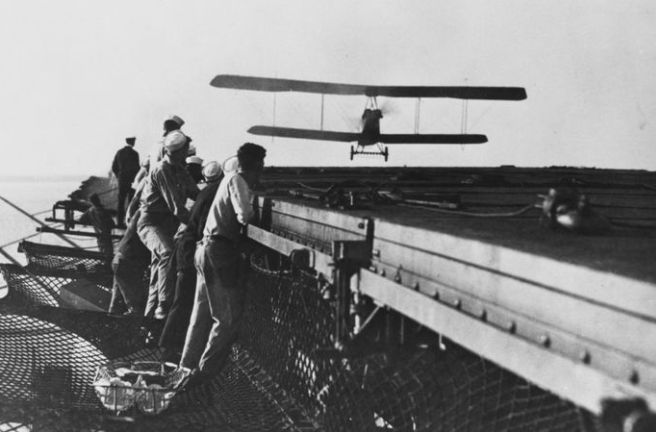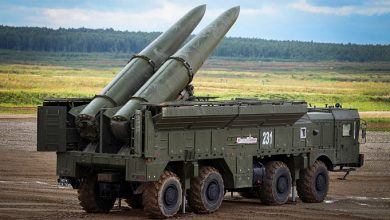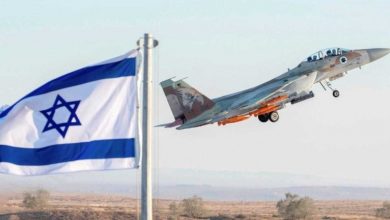100 years ago, America got its first aircraft carrier: Here’s how they’ve evolved since

This year marks the 100th anniversary of the first aircraft carrier in U.S. Navy service.
One of the most enduring symbols of American military power is the aircraft carrier.
This year marks the 100th anniversary of aircraft carriers in U.S. Navy service, with scores built in the century between the launch of the USS Langley and America’s latest carrier, USS Gerald R. Ford. The ships and planes that together constitute an aircraft carrier have seen truly breathtaking changes, incorporating new technology over the decades, like jet engines, electromagnetic propulsion, radar, and nuclear power.
In 1922, construction officially wrapped on USS Langley at the Norfolk Naval Yard in Virginia. Originally launched as the collier Jupiter, the coal carrier was an ideal choice for conversion due to its large stowage spaces, ample room for embarking air wing personnel, and reduced smoke risk. The ship was fitted with a full-length flight deck, aviation support equipment, an aircraft elevator for moving between the flight deck and hangar, and even a carrier pigeon house for use with airplanes that didn’t have radios. Overall, the ship was 520 feet long, displaced 14,000 tons fully loaded, and was equipped with five 5-inch anti-aircraft guns.
Langley was the first Navy ship to feature a catapult for launching aircraft and arrestor wires for recovering them. She could carry up to 36 Vought VE-7S “Bluebird” biplanes, a one-person aircraft with a top speed of 117 miles per hour and a maximum range of 290 miles. The VE-7S was equipped with just one Vickers .30-caliber machine gun timed to fire through the aircraft propellers. The Bluebirds, intended as scout aircraft, prioritized range over heavier weapons that would have reduced the distance the airplane could fly.
Langley was envisioned as a scout ship, designed to use its planes to scout over the horizon (the practical detection distance at the time) in search of the enemy fleet. Once located, Langley would pass the information on to a nearby battleship task force, which would then engage the enemy fleet with its massive 14- to 16-foot-long main guns. It would be another two decades before navalists would be convinced of the carrier’s superiority to the battleship, with the sneak attack at Pearl Harbor on December 7, 1941 making the transition permanent.
Ford, commissioned in 2017, is the latest aircraft carrier to join the U.S. fleet. Ford was built at Newport News, Virginia, just 25 miles from Norfolk—the site of Langley’s conversion. Like all carriers built after the 1920s, Ford was purpose-built as an aircraft carrier. Ford also features a full-length flight deck, and the overall ship is 1,092 feet long, more than twice as long as her predecessor. Ford is powered with nuclear energy, with its two A1B nuclear reactors giving it unlimited range.
Ford has not one, but three aircraft elevators, 11 elevators for shuttling ordinance back and forth from the magazine to the flight deck, and busts the scales at 100,000 tons, or 6.6 times the weight of Langley. Ford’s weaponry includes two Evolved Sea Sparrow Missile launchers for air defense, another two Rolling Airframe Missile (RAM) launchers for point defense, and three Mk.-15 Phalanx Close-In Weapon Systems, each with one 20-millimeter Gatling gun for defending against air and surface threats.
Commissioned in 2017, USS Ford has three times as many elevators, can embark twice as many planes, and launch four times as many aircraft as USS Langley.
But the air wing is where Ford really shines. The development of new types of planes and new technologies, including jet engines and radar, have allowed the carrier to expand its mission set from scouting to nearly every mission assigned to the U.S. fleet. Carriers today embark up to six different aircraft types, including 40 to 44 F/A-18E/F and F-35C Joint Strike Fighters, five EA-18G Growler electronic attack jets, four E-2D Hawkeye airborne early warning aircraft, two CMV-22B Osprey tiltrotor transports, and 19 Seahawk helicopters. The near future will see the MQ-25A Stingray drone join the wing.
The result is an air wing of approximately 80 crewed and uncrewed aircraft that can single-handedly prosecute an air war, from air-to-air combat to fleet defense, surface strike against ships and land targets, and even anti-submarine warfare.
Ford’s flight deck is twice as long as its predecessor’s, and the carrier can accommodate more than twice as many aircraft.
Carriers have seen incredible changes over the past 100 years, but still basically look the same: a ship with a long flight deck and aircraft sitting on top. We don’t know what the next 100 years will bring, and if the carrier as we know it will even exist 30 years from now. If the carrier goes away, something even more powerful will have to take its place.
But for now, Langley’s descendants are the most powerful surface ships at sea.
Source: Popular Mechanics





